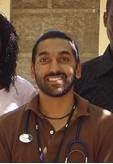-They are polygamists. Almost all tribes in the country are polygamists. Here, the wives live together generally in harmony.
-They have no culture of circumcision. I don’t know if it’s cultural for them not to circumcise.
-Their last names are related to the time of their birth in the astrological, seasonal sense. Consequently, many people have similar names.
-Their language is Dholuo.
-They are a Nilotic people with a Nilotic language, i.e. of the Nile. They migrated south from Sudan and are presumed to be descendent from the original Egyptians.
-Many Luo also live in Uganda and Tanzania.
-Their people are “rabble rousers” but not violent. Many of the original famous revolutionaries were Luo. Apparently, the shield on the Kenyan flag is a Luo symbol. I haven’t verified that, though.
-They have a unique practice of wife inheritance, in that when one brother dies, the other living brother inherits his wives. This practice perpetuates the HIV epidemic.
-One can marry girls when they are as young as 14 years old. I don’t know if girls can be married at younger ages.
-Women are not allowed to inherit land. Therefore, a family must have a boy survive to adulthood. This prompts the birth of many children.
-Women do ALL the work: cook, clean, bear the children, raise the children, fetch the water, build the houses, etc. Therefore, a family is in very deep trouble when the woman dies.
-Traditional healers were popular, but their popularity has waned over the 20+ years that Lalmba Kenya has existed. However, people still use them. I’m not sure how effective they are, for we always get the failures.
-HIV prevalence here is between 30 and 40%. This region has always had one of the highest prevalence rates in all of Kenya.
-There are Luo in Southern Uganda and Northwestern Tanzania. In fact, we get many Tanzanian patients. It seems that our medical care is superior to that which is available in Tanzania.
-Many people only speak Dholuo knowing very little Kiswahili or English. This particular monolingualism means that these people can go nowhere in the world outside of this area around Lake Victoria.
Some general Kenya facts:
-They gained independence from the British in the 1960’s. After independence, they cooperated with the British to form their government
-Moi was the second president of the country. He was a dictator and disallowed fair elections. People did disappear during his rule, but he was not so violent that everybody feared for his life everyday. The first “fair and free” elections were in 2002.
-Primary school is up to Grade 8. It is supposedly free, but it seems that all of the ancillary costs of books, uniforms, etc. make it very expensive.
-Things are quite expensive in Kenya. In most developing countries, Westerners experience an increased buying power. Not here. Everything costs the same here as it does in the States.
-Kenya has one of the better and more stable governments, economies, and societies in East Africa.
If any of you look up more information about the Luo after reading this entry and want to send me your comments and thoughts so that I can compare them to my experience, I would be happy to receive those e-mails.

